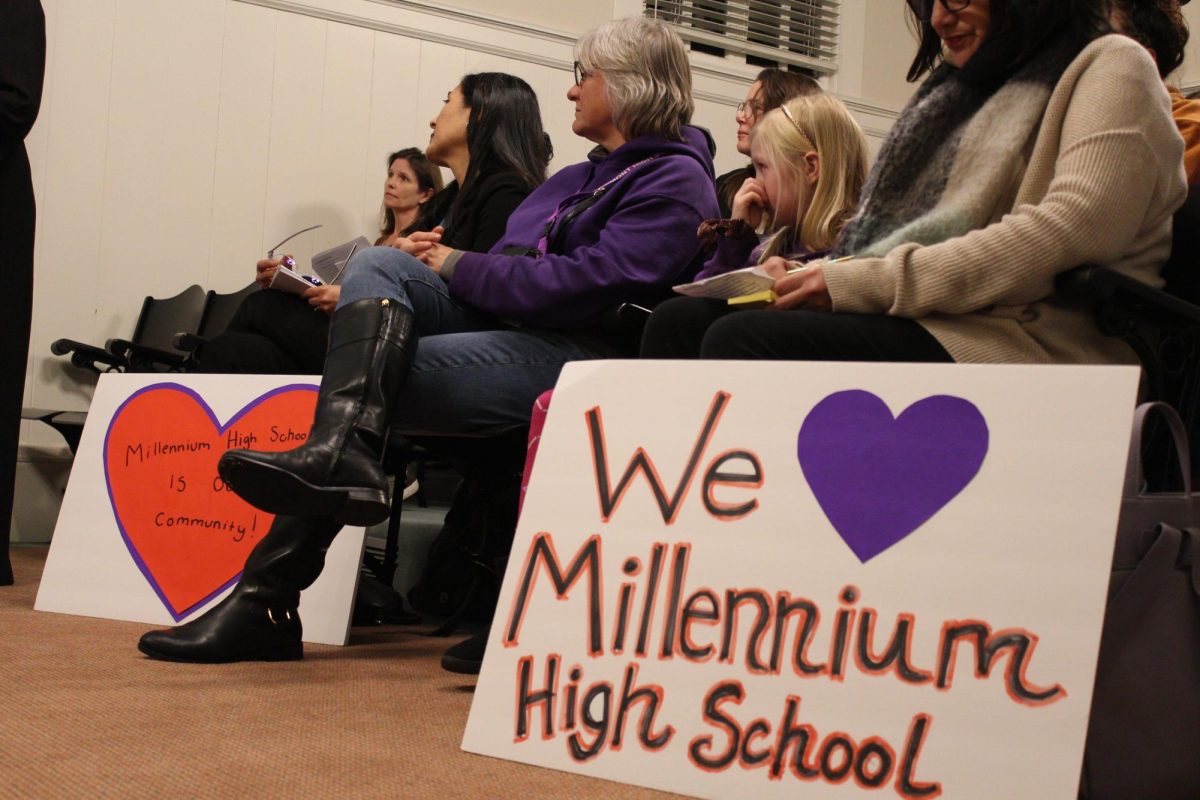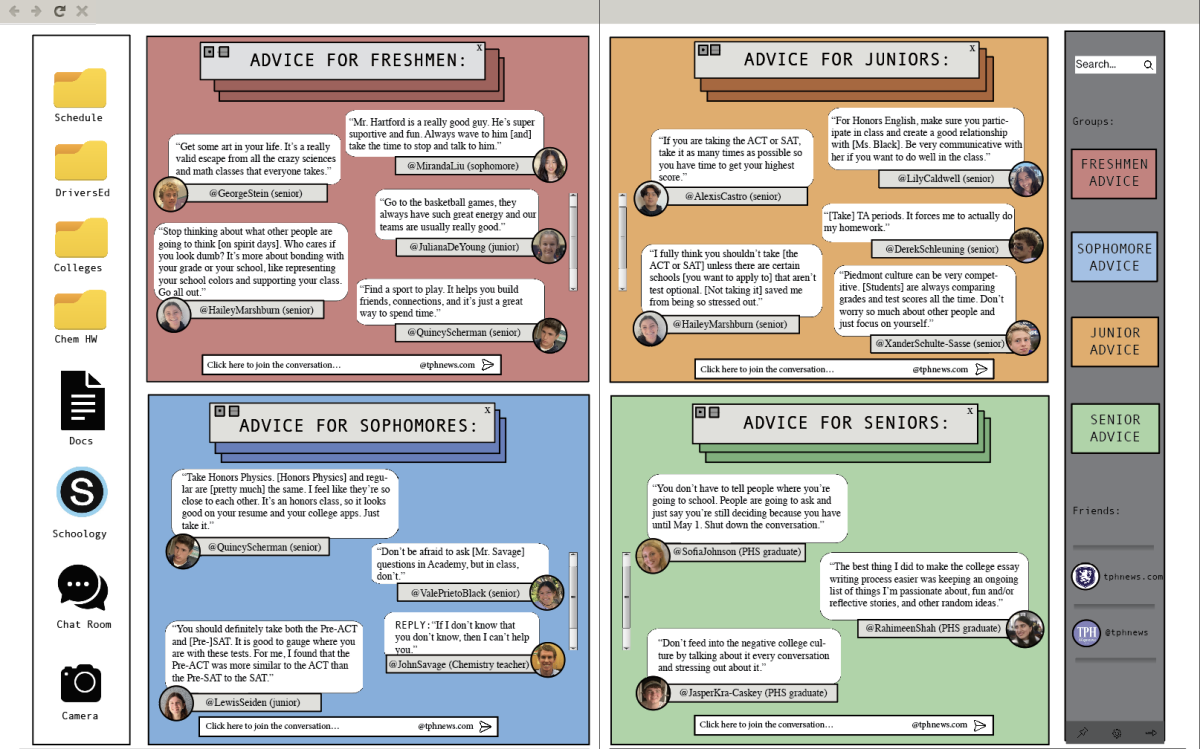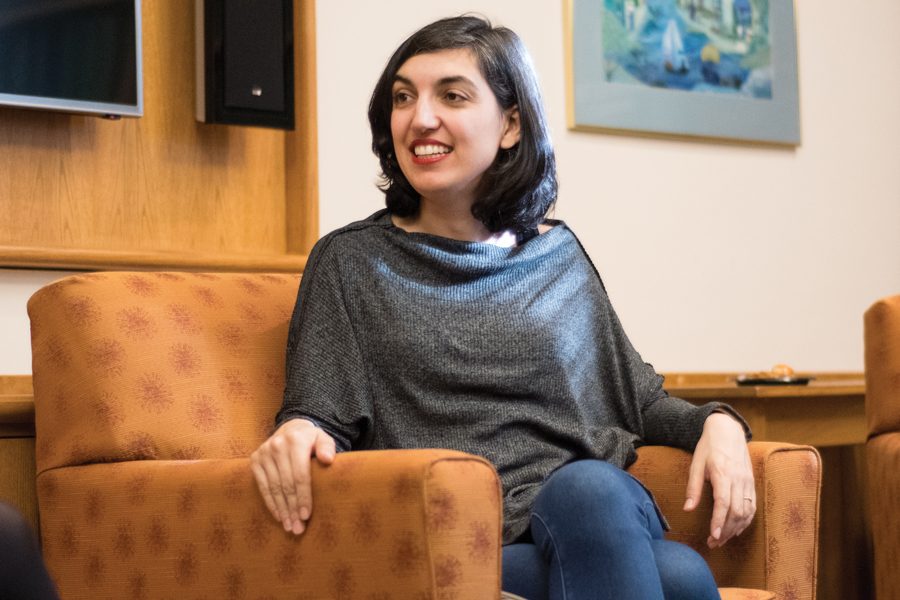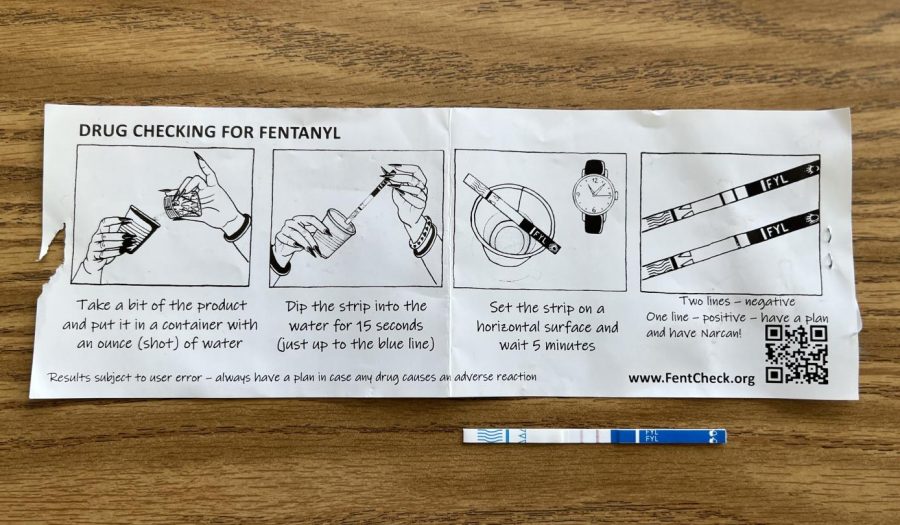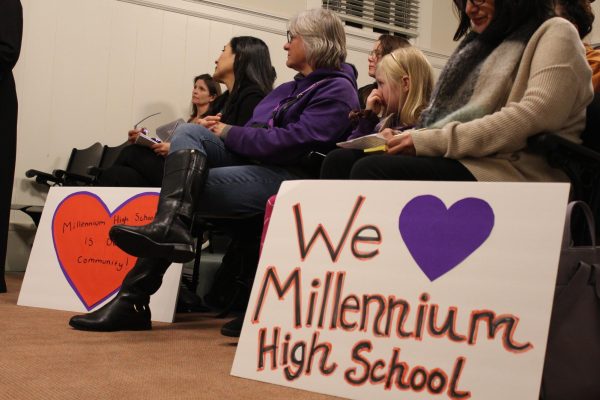Racial Equity Project
June 2, 2023
Eighty percent of teachers in America are white, according to harvard.edu. Seniors Anna Gotto, Chelsea Yi, Owen Grippando, Sage Mosley, and Addy Neel say that in Piedmont, that number is around 92 percent. For their Civics Capstone project, the group has focused on this aspect of inequality and the ways it impacts both teachers and students of color.
“We’ve had so many issues at our school with racism coming from teachers or coursework. [It] just creates this culture of racism in our school, and it creates this culture of white supremacy where all the positions of power that we see in the class come from white people,” Gotto said.
In order to ultimately create more diversity within the teaching field, a few obstacles must be overcome by prospective teachers. On a broader scale, America has a problem finding and retaining teachers and young people don’t see teaching as a lucrative career, according to edweek.com. Additionally, teachers of color may be wary of joining the profession due to the judgment they may encounter.
“When people of color enter into spaces for teaching and learning, they run up against microaggressions on a daily basis, and run up against assumptions that people of color are hired because of affirmative action,” said Piedmont’s Diversity, Equity, and Inclusion (DEI) director Dr. Marguerite Vanden Wyngaard (Dr. V). Locally, Jean Takazawa, coordinator of Piedmont’s Affinity Mentorship program, says that Piedmont may have a reputation of not being the most welcoming place for diverse groups, and that may deter new people of color (POC) hires.
Gotto and Yi said a danger of such a small POC staff is the high expectations not only placed on the few teachers of color, but their entire race.
“Because [there is] such little representation, they have this burden of being perfectly representative of this whole body of people,” Yi said. “It leads to that perception from a white student that just because the singular teacher of color or singular administrator of color that they’ve met isn’t competent, all of them aren’t competent.”
Dr. V has personally experienced that burden as an educator.
“As singletons in education, we all know the pressure to perform. The pressure to be stronger, run faster, do it better than anyone else. That is something that we grew up doing,” Dr. V said.
Gotto said of all the teachers of color at Piedmont, most of them populate the language department, fueling a stereotype of the “perpetual foreigner”. Yi said that not only does she not see people who look like her in a position of power at this school, but the only person that has a last name remotely similar to hers is the mandarin teacher.
Junior and Vice President of PHS’ Black Student Union Breah Bell has attended Piedmont schools since preschool. She said that a lack of teachers of color attributes to loss of a necessary perspective.
“Overall, this school district lacks diversity in almost every kind of way. By having a diversity of different ethnic groups and races, it’s just so much easier to learn different things about the world around us,” Bell said.
Piedmont is becoming more diverse, with 51 percent of Beach Elementary School students being students of color, compared to Piedmont High School’s 38 percent according to usnews.com. Yi and Bell say that there is not only a perspective missing for those young students, but also a kinship.
“We want younger kids to see themselves in their teachers,” Yi said.
Takazawa says that it is important for students to see people in power who resemble them in order to promote a sense of belonging and safety in the classroom.
Gotto said an increase of teachers of color could also prevent a chance of racially insensitive course material and discussions. In the last year, she has experienced two major incidents in history classes. Following those situations, Gotto said students did not feel comfortable talking about race with that teacher, hampering important educational conversations. After being mistaken for other Asian girls by her teachers multiple times this year, Yi said she feels as though she has been robbed of her identity, something that cannot be fixed with an apology.
Yi, Gotto, and the rest of their civics group said that there is a better solution for these microaggressions than the administration’s current approach.
“Originally, our goal was that we wanted the school to hire more POC teachers. But the thing is, right now, we have a lot of teachers on tenure, and they’re not planning on hiring teachers,” Gotto said. “We want to create something that happens before course material is shared to students, especially in History and English. We could hire a consultant who could come in once a month and work with the History and English teachers and go over their course planning.”
The civics group also thinks there could be an opportunity to form a safe space within the POC community.
“We were possibly thinking of bringing teachers of color and students of color together to facilitate conversations and create this culture in which the teachers feel valued and students feel heard,” Yi said.
Dr. V says that the district is currently implementing strategies to increase the amount of teachers of color at Piedmont. The High School has three first-year-resident teachers from nearby graduate schools who could be considered to be rehired. This program was proposed by Board of Education President Veronia Anderson Thigpen, and is aimed at diverse teachers.
“It’s not that we as a district aren’t trying. It’s just that we just can’t find candidates that want to come to us,” Takazawa said.
Members from the diversity groups meet once a month, Gotto said, and administration will go to these students with any issues involving diversity.
“It’s just so much work and a lot of times we’re doing stuff that we shouldn’t have to do. All this consent education I’ve done I shouldn’t have to do, the school should be incharge of that,” Gotto said.
“Can a mass email give me back the identity that was robbed from me? I don’t think so,” Yi said.
Additionally, due to the No Child Left Behind Act enacted in 2001, teachers had to be continuously tested and judged against the act’s restrictions, said Piedmont’s Diversity, Equity, and Inclusion (DEI) director Dr. Marguerite Vanden Wyngaard (Dr. V).
Bell has only had two black teachers in her life, and felt a special connection towards her eighth grade English teacher whom she said was strong and independent, exactly how she wants to be.





